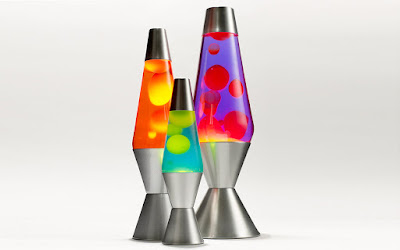Remember this? The Lava Lamp. Well this Lava Lamp is made out of wax and uses heat to keep the “lava” going.
We are going to try to make a much simpler version of the Lava Lamp with readily available household items.
It’s really easy to do and it’s fun! Try it!
Step 1
Preparing your material. All you need is:-
- Clear tall glass or clear container
- Vegetable oil or olive oil
- Water
- Food colouring or water colours (if you would like to colour it)
- Regular salt or fruit salt (Eno)
- For the light effect: Use a torch light or a see through large container with a light below
(3/ 4 water added without colouring)
(3/ 4 water added with colouring)
Step 2
Fill the glass container with 3 / 4 water and then you can add in the food colouring.
Step 3
You then add in 1 / 4 oil. You will see that the oil will settle on the top.
(Salt added in without lighting effect)
(Salt added in with lighting effect)
Step 4
Get your torch light or lighting ready. Place your container on the lighting or get someone to help you shine the torch light on your container.
(Lava Lamp with regular salt)
(Lava Lamp with fruit salt)
Step 5
Slowly add in the salt. You will see the lava lamp effect. The bubbling does not last for very long. You will have to keep adding in the salt.
OR Alternatively...
Fill the glass the 1 / 4 water and 3 / 4 oil. Put in the colouring after the oil. Add in fruit salt, you would see the bubbly action go on for much longer depending on how much fruit salt you put in. Do not put too much fruit salt. A little at a time for the best effect!
(Hold a torch light and watch your lava lamp)
Do you observe any differences?
Congratulations you have your very own home made lava lamp!! =D
*** *** ***
Learning outcome:
· You can get your child involved in the preparation and process and thereafter involved in the cleaning up after. It’s never too early to instil these qualities in them.
· Teaches vocabulary and math skill e.g. Handling and talking about the properties of the materials (dry, wet, liquid, oily). Measuring exactly takes practice.
· It helps children follow the procedures for safety.
· It also teaches children the importance of the order in which materials are mixed how it may affect the product.
· Also teaches them to make observations when materials are put in in different orders.
· Children can practice self-control especially when there will be the urge for them to get their hands on everything.
· Mixing materials together can make a change—a material may get wet, clump together, or dissolve.
· Heat can transform materials into a material with new properties.
· Experiments generate the curiosity in children and encourages them to want to know more.
1) Why does the oil float on the water?
Oil floats on water because a drop of oil is lighter than a drop of water. Another way of saying this is to say that water is denser than oil. Density is a measurement of how much a given volume of something weighs. Things that are less dense than water will float in water. Things that are more dense than water will sink.
Even though oil and water are both liquids, they are what chemists call immiscible liquids. That's a fancy word that means they don't mix.
2) What happens when salt is put on the oil?
Salt is heavier than water, so when you pour salt on the oil, it sinks to the bottom of the mixture, carrying a blob of oil with it. In the water, the salt starts to dissolve. As it dissolves, the salt releases the oil, which floats back up to the top of the water.
3) So this is how the Lava Lamp made out of wax works?
Like your oil and water, the "lava" in a Lava Lamp doesn't mix with the liquid that surrounds it. When it's cool, the "lava" is a little bit denser than the liquid surrounding it. When the "lava" rests on the bottom of the Lava Lamp, the light bulb in the lamp warms it up. As it warms up, the "lava" expands a little. When it expands, the "lava" stays the same weight but it takes up more space-so it's less dense. When it's warm enough, the "lava" is less dense than the surrounding liquid, and so it rises up to the top to float. At the top of the lamp, it cools down, becomes more dense, and sinks once again. This cycle repeats over and over as the "lava" warms up and rises, then cools down and sinks.
*** *** ***
Tips:-
1) Once the oil has settled you can use a baster to take out the oil for recycling for your next experiment.
2) During cleaning process, please ensure proper disposal of the non-recycled items to avoid clogging of your sink.
*** *** ***
Tips:-
1) Once the oil has settled you can use a baster to take out the oil for recycling for your next experiment.
2) During cleaning process, please ensure proper disposal of the non-recycled items to avoid clogging of your sink.
*** *** ***
Happy Learning through play!!



















